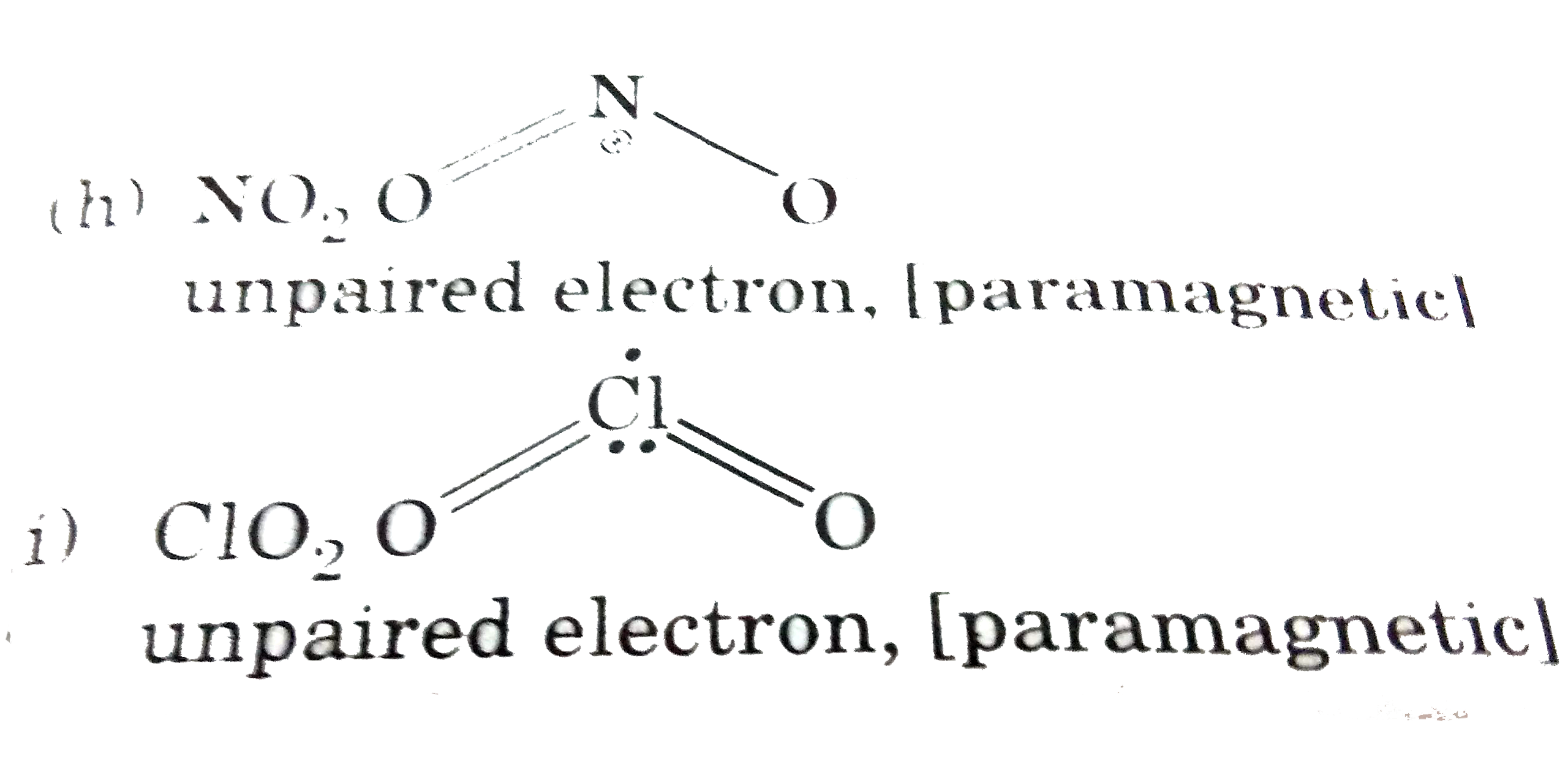Find the total number of complexes / species which are paramagnetic.
(a)[Co(NH3)6]3+, (b)[Co(H2O)6]3+,
(c)[Cr(NH3)6]2+, (d)[CoF6]3−,
(e)K3[PtCl3(C2H4)], (f)[Mn(NH3)6]2+,
(g)[Fe(NH3)6]2+, (h)NO2,
(i)ClO2, (j)[Pt(NH3)2Cl2
The correct Answer is:6
There are six compounds which are paramagnetic
(c )[Cr(NH3)6]2+,Cr2+,3d4,sp3d2 hybridisation, complex
(d) [CoF6]3−Co3+,3d6,sp3d2 hy7bridisation, there will be four unpaired electrons
(e )K3[PtCl3(C2H4)] diamagnetic
(f) [Mn(NH3)6]2+3d5,5 unpaired electrons, (paramagnetic).

(g) [Fe(NH3)6]2+ paramagnetic (4 unpaired electrons)
Topper's Solved these Questions
- COORDINATION COMPOUNDSBOOK - OP TANDONCHAPTER - COORDINATION COMPOUNDSEXERCISE - MATCH THE COLUMN TYPE
11 Videos
- CLASSIFICATION AND NOMENCLATURE OF ORGANIC COMPOUNDS BOOK - OP TANDONCHAPTER - CLASSIFICATION AND NOMENCLATURE OF ORGANIC COMPOUNDS EXERCISE - INTEGER
2 Videos
- ELECTROCHEMISTRYBOOK - OP TANDONCHAPTER - ELECTROCHEMISTRYEXERCISE - Matrix-Matching Type Question
3 Videos
Similar Questions
Find the number of complexes involving d2sp3 hybridisation of the cental metla atom/ion.
(a)[Co(Ox)3]3−, (b)[Mn(CN)6]4−,
(c)[Mn(NH3)6]2+, (d)[CoF6]3−,
(e)[Co(gly)3], (f)[Pt(NH3)6]4+,
(g)[Ni(H2O)6]2+, (h)[Co(H2O)6]3+,
(i)[IrCl6]3−
View SolutionFind the number of complexes involving d2sp3 hybridisation of the cental metla atom/ion.
(a)[Co(Ox)3]3−, (b)[Mn(CN)6]4−,
(c)[Mn(NH3)6]2+, (d)[CoF6]3−,
(e)[Co(gly)3], (f)[Pt(NH3)6]4+,
(g)[Ni(H2O)6]2+, (h)[Co(H2O)6]3+,
(i)[IrCl6]3−
View Solution
Knowledge Check
[Fe(H2O)6]Cl3and[Pt(NH3)2Cl2] are
Aanionic and neutralBneutral and cationicCcationic and neutralDcationic and anionic
Total number of paramagnetic complexes which are inner orbital complexes :
(i)[Cr(NH3)6]Cl3 (ii)[Co(NH3)6](NO3)2 (iii)[Ni(NH3)6]SO4
(iv)K2[PtCl6]. (v)[V(H2O)6]SO4 (vi)[Mn(NH3)6]SO4
(vii)[Fe(H2O)5(NO)]SO4 (viii)K3[CuCL4] Na4[Fe(CN)5(NOS)]
View SolutionTotal number of paramagnetic complexes which are inner orbital complexes :
(i)[Cr(NH3)6]Cl3 (ii)[Co(NH3)6](NO3)2 (iii)[Ni(NH3)6]SO4
(iv)K2[PtCl6]. (v)[V(H2O)6]SO4 (vi)[Mn(NH3)6]SO4
(vii)[Fe(H2O)5(NO)]SO4 (viii)K3[CuCl4] Na4[Fe(CN)5(NOS)]
View SolutionHow Many Complexes Are Diamagnetic In Nature? [Co((H2O))6]3+, [Co(NH3)6]3+, [NiF6]2−, [Cr(CN)6]3−, [Co(CN)6]3−
View SolutionHow many of the following compounds splitting energy (Δ) is greater than pairing energy (P) ?
(a)Fe(Co)5, (b)[Co(H2O)6]3+
(c)[Mn(NH3)6]2+, (d)[Ir(H2O)6]3+
(e)Na2[Fe(CN)5NO], (f)[Ni(CO)4],
(g)[PtCl4]2− (h)[Co(H2O)3F3]
View SolutionHow many of the following compounds splitting energy (Δ) is greater than pairing energy (P) ?
(a)Fe(Co)5, (b)[Co(H2O)6]3+
(c)[Mn(NH3)6]2+, (d)[Ir(H2O)6]3+
(e)Na2[Fe(CN)5NO], (f)[Ni(CO)4],
(g)[PtCl4]2− (h)[Co(H2O)3F3]
View SolutionAmongest [Co(OX)3]3−,[CoF6]3−,[Co(NH3)6]3+ and [Co(NH3)6]2+ the no. of coloured complexes
View SolutionHow many complexes among the following are paramagnetic
[Mn(CN)6]3−,[Cr(H2O)6]3+,[Co(en)3]3+,
[V(CO)6],[Ni(NH3)6]2+,[Ni(dmg)3],
[Pt(Cl)2,(NH3)2].[Cu(NH3)4]2+,[Cu(CN)4]3−
View Solution
